- Home
- About us
- Products
- Dealer Enquiry
- Contact Us
- 044 -2486 1994
- +91 99623 98222
- sales@nantech.in
- REQUEST A QUOTE
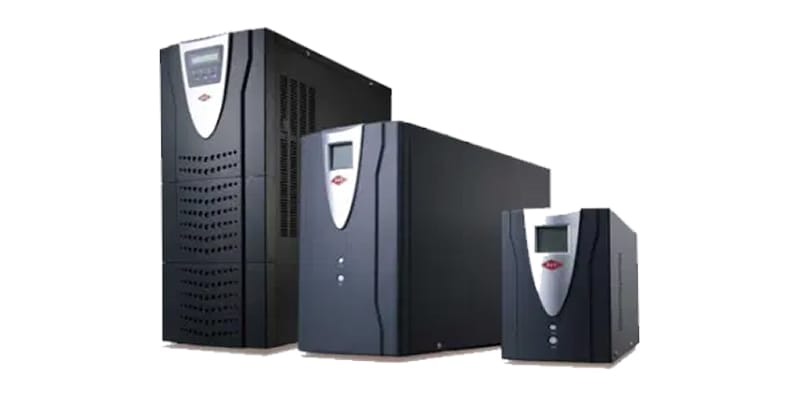
In today's infrastructure landscape, Uninterruptible Power Supply (UPS) systems safeguard operations by delivering backup power during outages.
Modular UPS and conventional UPS represent two distinct methodologies for achieving this. Unlike traditional systems, modular UPS allows capacity adjustments via scalable modules, while conventional UPS architectures rely on fixed designs.
Choosing between the two UPS options directly impacts:
Both systems address unique market needs, with modular UPS excelling in dynamic environments and conventional UPS suiting smaller installations.
Understanding these differences is crucial for making informed decisions. Nantech, a leading provider of UPS in Chennai, offers comprehensive solutions for all your UPS needs.
Ready to dive deeper? Let's dissect the structural distinctions between these power solutions in this section.
Modular UPS systems employ individual, hot-swappable power modules, enabling seamless scalability while maintaining operational continuity. This architecture allows users to add or replace hot-swappable components without disrupting power flows.
Conventional UPS systems, in contrast, function as monolithic units with fixed capacities that lack inherent redundancy. Their central power paths create single points of failure, demanding complete shutdowns for maintenance procedures, such as rectifier or inverter replacements.
Also Read: Uncovering the Game-Changing Benefits of Modular UPS Systems
The core components of modular UPS include:
The core components of conventional UPS include:
With the fundamental structural differences between modular and conventional UPS architectures clarified, let’s next analyse their differences in operational adaptability in fluctuating power scenarios and scalability.
Modular UPS technology allows operators to seamlessly expand capacity through additional power modules. This scalability eliminates wasteful overprovisioning while aligning costs to actual load demands. Contrariwise, conventional UPS’s rigid infrastructure presents inherent bottlenecks. Their static capacities force purchasers to overspend on unused capacity early, while upgrades mandate costly downtime for complete unit swaps.
Furthermore, modular UPS’s compact design addresses critical space constraints in data centres. They vertically integrate components—enabling efficient deployment in infrastructure-cramped environments—whereas conventional UPS models demand dedicated floor space.
With their ability to scale and optimise space usage, modular UPS systems’ advantages in adaptability and flexibility become undeniable.
Modular UPS designs offer built-in N+1 redundancy: if one power module fails, others seamlessly compensate while maintaining full load capacity. This self-healing capability keeps facilities operational even during partial subsystem failures.
Conventional UPS systems, on the other hand, follow a riskier paradigm. Some incorporate basic redundancy measures, but critical component failures often precipitate complete shutdowns. Why does this matter? Conventional solutions require external backups like diesel generators, introducing unnecessary complexity and higher lifecycle costs for equivalent protection.
While conventional systems demand large capital investments and cumbersome backup layers, modular approaches deliver intelligent redundancy. Uptime optimisation here translates directly to business continuity assurance for data centres and critical infrastructure.
In mission-critical environments, operational continuity hinges on efficient maintenance protocols. Modular UPS systems redefine this benchmark through inherent serviceability advantages. With hot-swappable modules, engineers seamlessly remove/replace failed components mid-operation, eradicating downtime during repairs. Contrast this with conventional UPS maintenance, which often necessitates full shutdowns.
When comparing “modular UPS vs. conventional UPS” solutions, the ability to perform component-level upgrades extends equipment lifespan while reducing waste—critical factors for ESG-driven infrastructure strategies. As power requirements grow increasingly dynamic, aligning UPS architectures with operational priorities becomes essential for risk management.
Ultimately, deciding between the two UPS solutions—conventional UPS vs. modular UPS—hinges on your operational priorities, projected growth scale, and tolerance for infrastructure risk. Small business owners requiring scalable solutions thrive with adaptable modular UPS platforms, while those prioritising immediate cost reductions better suit static conventional UPS installations.
What's the golden rule? Conduct a comprehensive needs analysis with technical consultants before investing. At Nantech Power Systems Pvt. Ltd, Chennai, we translate your unique demands into durable infrastructure roadmaps. Our certified UPS engineers can help you navigate this decision with lifecycle costing models tailored to your infrastructure.
Contact us today to determine which UPS system is right for your business!
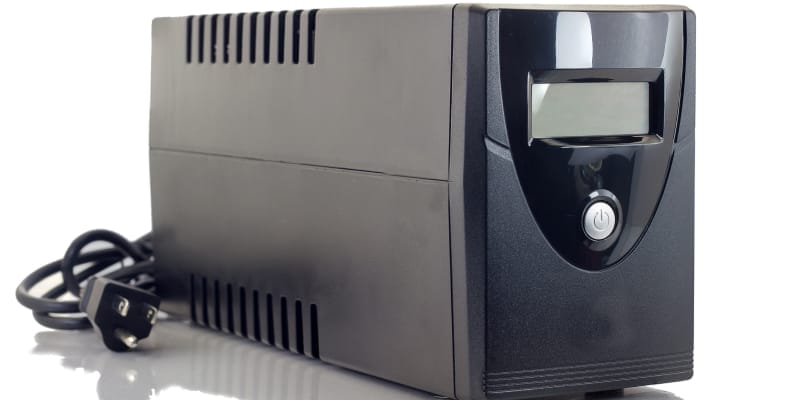
Your business thrives on steady power, especially in dynamic retail and manufacturing sectors. Modular Uninterruptible Power Supply (UPS) systems transform power management for owners seeking adaptable solutions. The advantages of modular UPS encompass energy efficiency, cost savings, and resilience against outages.
Looking for UPS in Chennai? Nantech offers premium solutions, ensuring flexibility and continuity by aligning with your diverse business needs.
As you delve deeper, you will see how adopting modular UPS can boost your operations significantly.
Modular UPS systems present a more adaptable solution for changing organisations. They can adjust as requirements evolve, unlike standard UPS systems, which are static and provide a fixed power capacity. These systems are commonly used in data centres, server rooms, and other infrastructural settings.
The essential aspects of modular UPS include:
How does a modular UPS impact your business? It maintains operations, seamlessly adapting to failures. This is not merely technical; it guarantees continuity, reducing total system failure risks.
Let us explore the modular UPS advantages:
Modular UPS systems thrive on redundancy, ensuring a module failure does not impair the whole system. These systems excel by integrating smaller UPS modules into one setup. Extra modules boost power capacity and provide a fail-safe if one fails.
The N+X redundancy model benefits small businesses. N modules support your load, plus X extra for redundancy. This ensures operations continue without interruptions, which is vital for client trust and operational integrity. Operational efficiencies extend beyond redundancy. Adding or replacing modules without disrupting the power supply makes modular UPS a wise choice for optimising power solutions.
Modular UPS systems offer lower installation and ownership costs than traditional ones. Initial investment may be higher, but efficiency, scalability, and reduced maintenance lead to savings.
They reduce energy use and bills and are designed to operate efficiently at partial loads. The pay-as-you-grow model ensures investments align with growth, enhancing ROI. As your business evolves, reliable, cost-effective power solutions that grow with you are crucial for maintaining and boosting operational efficiency.
Modular UPS systems maintain high efficiency, especially under varying loads. Traditional systems may lose efficiency at low capacity, but modular systems adapt. This saves energy and cuts costs. For instance, if you need 60–70 kVA, a modular UPS matches this, avoiding inefficiencies due to underutilisation.
Scalability is a hallmark of modular UPS, letting infrastructure grow with your business. This is crucial in developing regions, where demand changes rapidly. Adding modules for capacity or redundancy supports a pay-as-you-grow model, reducing initial investment and enabling precise power management control, minimising downtime for upgrades or maintenance.
Also Read: Know How To Buy The Right UPS!
Designed with hot-swappable modules, modular UPS systems allow replacements or upgrades without shutdowns, which is beneficial for businesses where downtime is costly. Maintenance or upgrades without interrupting the power supply enhance business continuity.
Another attraction is reliability. Modular UPS systems include redundancy, lowering the total system failure risk. Thanks to the remaining modules, the system continues operating in case of a module failure. This ensures a continuous power supply and peace of mind, knowing operations are protected against disruptions.
Modular UPS systems smartly use space better than traditional setups. Vertical expansion lets you grow power protection without more floor space. This saves real estate and creates an organised, clutter-free environment, which is vital in small facilities.
Scalable systems do not need additional infrastructure to generate more power. Instead, integrating more modules into existing frameworks lets your system evolve with needs, providing a robust solution that adapts to requirements.
Implementing a modular UPS system requires a forward-thinking approach that balances technological adaptability with cost-effective scaling. Let us examine the key strategic considerations for maximising your UPS investment.
Modular UPS systems are not just power protection but a future-proof backbone. With fast technological advances, adaptability to new technology is crucial. As your business evolves, your modular UPS can add modules or upgrades with little disruption.
This integration ensures infrastructure remains cutting-edge, supporting current operations and future expansions. This approach saves short-term money and secures long-term investment, ensuring your system grows with business needs. As you look forward, flexibility to adapt and expand is a strategic asset.
Modular UPS systems are designed for cost-effective expansion and upgrades. Unlike traditional systems needing overhauls for growth, they add modules for capacity or redundancy. This approach minimises initial investment and reduces total ownership cost over time.
Paying as you grow is a game-changer for small businesses, especially in developing regions. This model allows you to start with what you need and expand as you grow without overcommitting resources. It supports financial flexibility and ensures investment matches current needs with seamless scaling options.
For small businesses in retail and manufacturing, especially in developing regions, selecting a scalable modular UPS system for future growth is vital. Here are guidelines for informed decisions to choose a modular UPS:
Adopting a modular UPS is not just about meeting current needs. It is also about future-proofing your business operations for growth and sustainability. Adaptability, efficiency, and scalability make these systems a strong foundation for thriving amid uncertainties in retail and manufacturing in developing regions.
As Chennai's trusted modular UPS expert, Nantech Power Systems Pvt. Ltd secures your power supply and enables a smooth transition to a future where disruptions do not threaten continuity and growth. With our expertise, we provide tailored solutions as you consider power stability steps, supporting streamlined operations and uninterrupted success.
Scale your power protection as your business grows. Connect with us to explore modular UPS solutions today!
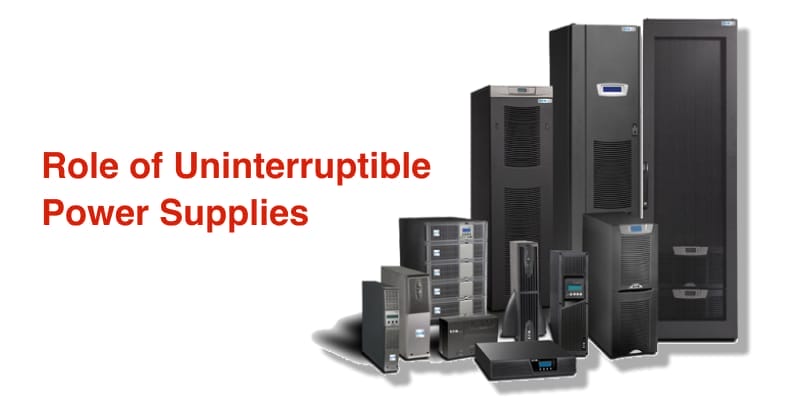
In an era where continuity and reliability are the keystones of operation across critical industries, the role of Uninterruptible Power Supplies (UPS) has become more crucial than ever. Industries like healthcare, IT, finance, and emergency services depend on the seamless performance of UPS systems to mitigate the risks associated with power disruptions.
When dealing with high stakes, choosing the right UPS solution becomes a pivotal aspect of your strategic planning.
Let us explore how UPS systems form the backbone of critical infrastructure. We will look at their importance and essential role, including specialised technologies like numeric UPS systems and the advanced features that keep your operations running smoothly.
In our technology-driven world, UPS systems are the foundation for ensuring continuous operation across various industries, protecting against the severe impacts of power outages. These systems are designed to activate instantly when the main power supply fails, ensuring your critical devices and systems stay operational.
UPS systems have become more sophisticated, from small-scale units that protect individual computers to large-scale solutions designed to ensure the uninterrupted operation of entire data centres or manufacturing plants.
Modern UPS solutions come equipped with advanced features that you will find valuable: scalable power options, redundancy to eliminate single points of failure, and high-efficiency modes that save energy while maintaining reliability.
Let us look at how these features work for you:
Also Read: Why Is An UPS Critical In Medical Imaging And Diagnostics
Here's how UPS systems become indispensable across different sectors, each with unique power protection requirements yet sharing a common need for uninterrupted operations.
When we look at IT operations, both financial and reputational stakes highlight why reliable UPS systems matter. Consider a scenario where your data centre faces a sudden power outage—with a UPS system in place, your servers continue to operate smoothly, preventing any operational disruptions. This saves your company from potential financial losses and maintains your reputation for reliability and uptime.
These systems are not merely backup plans but fundamental components of your IT infrastructure, ensuring data integrity, network stability, and operational continuity.
In healthcare environments, your UPS system becomes a true lifeline. It keeps life support systems, critical care units, and sensitive medical equipment operating without interruption, even during power outages. This seamless power backup can be crucial in life-or-death situations.
Beyond this, it protects your patient data and medical histories by ensuring that healthcare-related data centres remain operational, preventing data corruption and loss. This is vital for maintaining the integrity of medical records and ensuring that healthcare providers have uninterrupted access to the information they need to make informed decisions.
Let us consider how this applies to financial institutions, where millions of daily transactions depend on reliable power sources to process efficiently and securely. Here, even a brief power disruption can lead to significant economic losses and expose sensitive data to cyber threats. Your UPS system provides instant power backup, keeping transaction processing and data protection mechanisms running without interruption.
This continuous operation maintains the integrity of your financial transactions while protecting against data breaches that could affect customer trust and confidence.
During natural disasters or emergencies, continuity of power is not just desirable but imperative. Emergency services, including 911 call centres, government agencies, and transportation control centres, rely heavily on uninterrupted system operation.
The UPS system ensures these vital communication hubs can continue operating even when the primary power source fails. By maintaining the functionality of emergency response systems, UPS units help to save lives, preserve order, and facilitate the efficient allocation of resources during crises. The assurance of continuous operation provided by UPS systems not only supports the logistical aspects of emergency response but also reinforces the societal trust in these services’ ability to perform under pressure.
This ability underscores the broader role of UPS in critical industries, where power stability is not just a requirement but a cornerstone of operational integrity.
Your UPS is the backbone of your operations, safeguarding against power interruptions and ensuring the continuity of your services. Let us explore the best practices for UPS maintenance:
Remember, the cost of regular maintenance pales compared to the potential losses from unexpected downtime. Ensuring its operational integrity through diligent maintenance is not just a best practice. It is a critical business necessity.
In today’s business scenario, investing in a UPS is not a luxury or unnecessary expense but a sensible investment.
As one of the leading UPS dealers in Chennai, Nantech Power Systems Pvt. Ltd. brings two decades of expertise to your power protection. We understand that your critical operations demand excellence, so our bespoke power management solutions focus on a commitment to reliability, your unique needs, and energy efficiency.
Secure your power supply and ensure your operations remain resilient in adversity— connect with us today!

The industrial UPS and commercial UPS systems go beyond mere labels. These units are engineered to address unique hurdles and adapt to varied scenarios in the retail and manufacturing sectors. By grasping the operational efficiencies of both, you are better positioned to protect essential processes and boost overall productivity.
This article by Nantech, one of the most reputed UPS manufacturers in Chennai, will detail each system's specifications and their implications for your business operations.
Choosing an Uninterruptible Power Supply (UPS) system for your industrial needs requires understanding the specific traits that set industrial UPS systems apart from commercial ones. These systems are tailored to meet the rigorous demands of environments where high stakes and challenging conditions prevail.
Let us delve into the robustness and adaptability of industrial UPS systems by reviewing their main features:
Given these traits, it is clear why industrial UPS systems are vital in critical and harsh environments.
Now, let us turn to commercial UPS systems to understand their operational contexts and limitations.
When evaluating Uninterruptible Power Supply (UPS) systems for your business, particularly in IT applications like computer rooms and data centres, commercial UPS systems often stand out as an apt choice.
These units are typically placed in critical environments that do not endure the harsh and demanding conditions of industrial settings. Unlike industrial environments, the surroundings for commercial UPS systems are less harsh. These systems operate effectively within controlled settings where temperature and cleanliness are optimal.
Typically, the ambient temperature range suitable for commercial UPS systems is between 23°C and 35°C, with air humidity levels maintained from 10% to 55% RH. Such conditions ensure the reliability and efficiency of the UPS without the need for more complex and costly specifications that industrial settings might require.
The battery life in commercial UPS systems generally spans around five years, reflecting the system's design for relatively stable and clean operating conditions. Compared to industrial UPS systems, the shorter battery life aligns with the less rigorous operational demands and the controlled environment in which they are typically used.
When evaluating Uninterruptible Power Supply (UPS) systems for your operations, understanding the distinct environments in which industrial and commercial UPS systems operate is crucial.
To delineate the operational environments for both types of UPS systems, consider the following distinctions:
Understanding these environmental differences is crucial when selecting the appropriate UPS system for your needs, ensuring both safety and efficiency.
When evaluating Uninterruptible Power Supply (UPS) systems for your operations, the customisation options available can significantly influence your choice, especially if you operate in industrial sectors.
Industrial UPS systems offer extensive customisation features that cater to specific operational demands, which is crucial in environments where standard solutions might not suffice.
Industrial UPS systems are designed with a high degree of customisation to meet diverse and demanding operational requirements. According to insights from various industry sources, these systems allow for choices in cabinet colour, size, and communication protocols. You can specify everything from the type of cabinet finish to suit harsh environments to the communication setups that align with existing infrastructure, ensuring that the UPS enhances operational efficiency rather than becoming a bottleneck.
On the other hand, commercial UPS systems generally offer limited customisation. These systems are typically mass-produced to meet standard requirements found in less demanding environments like office buildings or IT data centres. Options for altering cabinet colour or size are usually unavailable, which might not be a concern in controlled environments where functionality precedes specific operational adaptability.
The importance of design flexibility in industrial UPS systems cannot be overstressed. Customising a UPS system in industrial applications allows for precise alignment with technical and environmental requirements. This customisation ensures that the UPS performs optimally under specific conditions and contributes to the operation's overall safety and efficiency.
Industrial UPS systems are engineered for resilience and extended service life, often exceeding 20 years. This durability is crucial in environments where power stability is a must.
Industrial UPS systems benefit from robust design choices that cater to challenging environments. They are equipped to handle extreme temperatures and are resistant to contaminants, significantly contributing to their longevity. Moreover, the availability of spare parts and comprehensive service options ensures that these systems can be maintained and repaired without needing complete replacement, thus extending their operational life even further.
On the other hand, commercial UPS systems typically have a shorter lifespan because of their less rigorous operational demands. They are generally used in controlled environments like data centres or office buildings, where the conditions are less harsh. These systems are not designed to handle extreme variations in temperature or high levels of airborne contaminants, which can accelerate wear and tear.
Furthermore, commercial UPS systems' service and maintenance options are often more limited than those of their industrial counterparts. This can lead to situations where a system might need to be replaced entirely rather than repaired due to the unavailability of parts or service expertise.
Understanding these durability factors is crucial for assessing how they contribute to the overall efficiency and safety in various operational settings.
Understanding the stark differences between industrial and commercial UPS systems underpins effective power management strategies. Whether you need the rugged durability of industrial UPS systems or the efficient adaptability of commercial ones, making the right choice is critical for maintaining uninterrupted power and operational stability.
Secure your power supply with Nantech's expertise, providing robust solutions tailored to meet distinct challenges in retail and manufacturing environments.
It's essential to recognise the different requirements and capacities of commercial and industrial UPS systems. Here are some key points:
Commercial UPS systems generally do not possess these industrial-specific features, making them less suitable for heavy-duty industrial applications.
These UPS types serve different needs based on the sensitivity and requirements of the devices they protect.
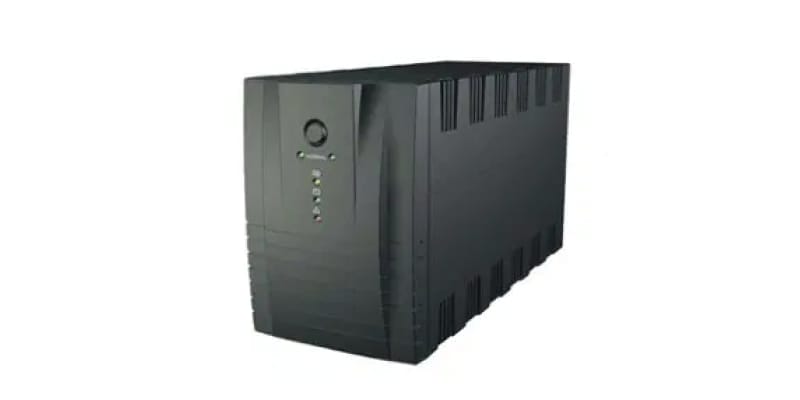
Imagine you are at the helm of a bustling business, and a reliable power source is your lifeline. A hiccup in your Uninterruptible Power Supply (UPS) makes you wonder whether you should replace your UPS battery or buy a new UPS. Let us embark on a cost-effectiveness journey to make a smart choice that keeps your wheels turning smoothly and aligns with your fiscal plans.
Your UPS is the lifeblood of your enterprise, safeguarding crucial systems during power cuts. Yet, no tech lasts forever, and signs of wear might threaten your venture. As your UPS battery ages, its backup time shrinks, exposing your vital gear to power loss risks. Heat and poor storage can minimise your UPS life. A battery in temps above 20°C may degrade faster, impacting your UPS’s output. Catching these signs early is key to uninterrupted power protection.
UPS batteries have a 3-5 year shelf life. Beyond this, it is smart to replace them to avoid surprises. When your UPS starts faltering, pinpointing the problem is essential. Is the battery to blame? Here is a quick rundown of signs that It is time for a UPS battery change
It's also possible that if your UPS voltage is high, your battery may be the culprit. If the battery is unstable or its shape changes, it may act up. Swollen or leaking units are dire warnings. Your battery could degrade quicker in places with frequent power cuts, so timely checks and swaps are crucial.
Regular checks can catch issues before they grow. Remember, preventive UPS care is key.
By responding to these signs, you can balance the upsides of a battery replacement with the downsides of battery failure.
Replacing an old UPS battery not only restores lost performance but also extends the lifespan of your system. This can secure your operations from power outages. If your UPS system is otherwise functioning well, swapping batteries may be more cost-effective than replacing the entire system.
Opting for a battery change also steps towards a cleaner Earth. Picking the correct UPS battery is vital. A smart choice ensures your UPS runs optimally. Exploring informed battery selection could benefit you further.
Choosing between a new UPS battery and a system upgrade requires a thorough cost-benefit analysis. Stack up the repair bills of an old UPS against a new system's upfront cost. Newer UPS models can save on power bills over time. Plus, the potential losses from UPS failure. in cash, customer trust, and data. are steep. A new system might bring better uptime and less risk.
Market reports show a surge in the need for steadfast power aids. A Technavio study forecasts a USD 439.47 million growth in the global UPS battery market by 2027. This highlights the wisdom in considering a system upgrade to stay competitive.
If lower upkeep costs, better energy use, and less downtime outweigh the costs, it could be time to consider a full upgrade. This move could keep your business powered and ready for what lies ahead.
When your UPS nears its twilight years, you might wonder about battery change or full upgrade. Knowing when to upgrade is key. Newer UPS models come with perks like better energy efficiency, which means lower power costs and a smaller eco-footprint.
Adding modern isolation tech could be smart in a system upgrade. These transformers heighten safety and efficiency, keeping your power setup current.
Watch for signs of an outdated UPS. A battery switch might be insufficient if it is often down or can't keep the power on. Eyeing energy and cost savings with fresh UPS models can help you make an informed, tailored decision.
Faced with the UPS battery or system upgrade choice, tapping into UPS expert’s know-how is vital. They have the savvy to steer you through UPS upkeep and upgrades, matching your business’s specific needs. They can check your battery and system, considering factors like age and new tech. They will tell you if a battery change is enough or if you are better off with a full upgrade.
In short, UPS expert advice is priceless. Their insights can lead to a confident, informed decision, ensuring your business stays powered and protected. When thinking about your UPS options, remember that expert advice is a solid investment in your power solutions future.
Choosing wisely between a UPS battery swap and a system upgrade can define your business’s power outage resilience. Your UPS is crucial, so weigh your system's current form, future needs, and the financial effects of both paths.
Nantech Technologies stands ready with bespoke power solutions backed by over 20 years of knowledge, experience, and customer service. As one of the top UPS battery dealers in Chennai, we are geared to meet your unique demands. Lock in your power supply with Nantech’s insight and snag a free power solution consult today, making sure your business keeps ticking without interruption.
If you do not replace your UPS battery, the following consequences can occur:
Regular preventive maintenance and timely battery replacement are crucial to ensure UPS reliability and protect against unexpected downtimes.
No. Simply replacing a UPS battery may not match the reliability of a new UPS, especially if the unit is old, has inadequate capacity, or if newer models offer better technology and features.
To safely dispose of old UPS or UPS batteries, you can take the following steps:
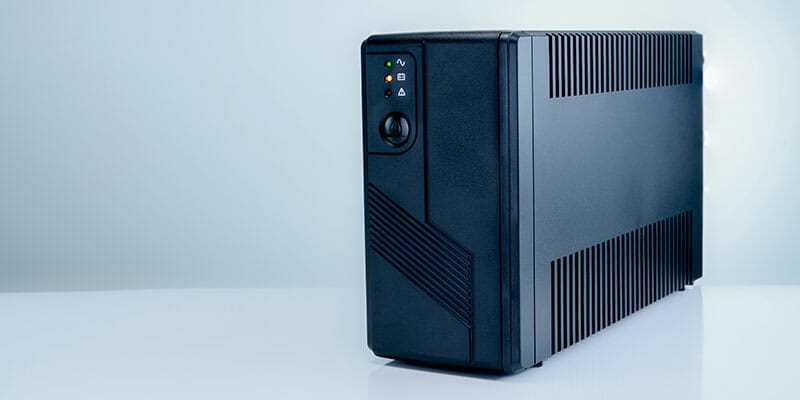
Many of us depend on computers to perform our jobs, education, businesses, and finances. So, power outages can have serious consequences. We risk losing information, failing to complete necessary transactions, and being accidentally removed from critical meetings if power outages happen unexpectedly. Uninterruptible power supplies, or UPSs, have become increasingly popular as it helps us overcome all the difficulties mentioned above. Recognising the importance of dependable power backup solutions, businesses and individuals are reaching out to companies such as Nantech Power Systems for our expertise in delivering high-quality delta UPS systems.
Power fluctuations can pose significant dangers to your electronic devices and computer in the modern world. To protect against these fluctuations and avoid potential damage, backup power supplies, also known as UPSs, are constructed to stabilise the power supply. Different UPS designs offer varying degrees of protection against disturbances such as power surges, noise interference, overvoltage, undervoltage, power decline, and power outages.
Manufacturers have devised a variety of UPS systems, including line-interactive, double/online conversion, and offline/standby configurations, to address these issues. This discussion will concentrate on online and line-interactive UPS layouts, comparing and contrasting them to assist you in selecting the optimal solution for your specific requirements. First, we'll discuss online and line-interactive UPS here.
Line-interactive UPS
A line-interactive UPS maintains the inverter's connection to the electrical grid. In the event of a power disruption, it switches the DC route from the battery through its normal charging mode to its emergency power supply mode. This ingenious setup permanently links the UPS's output to the battery-powered AC inverter. The UPS inverter goes into battery charging mode when the source of input for AC power is stable. When the mains supply goes out, the UPS's transfer switch opens, allowing the battery to provide the device's output. Since an inverter is always wired to the output, it provides additional filtering and results in fewer switching transients.
Pros of a line-interactive UPS include:
Negative features are:
Double/online conversion UPS
A double-conversion UPS, as the name suggests, does two power conversions: The primary source's Alternating Current (AC) is converted into Direct Current (DC) and stabilized before being supplied into an inverter, which turns the DC back into Alternating Current (AC). In the event of a mains power failure, the UPS will switch to battery power without human intervention. Since the inverter has already been activated, power is transferred to the battery instantly. The double-conversion process reduces power disturbances from the mains, such as harmonics and waveform distortions. Thus, online UPSs offer the highest level of safety for IT hardware.
The advantages of a double/online UPS are:
The cons include:
All varieties of UPS systems were created to safeguard hardware and electronic devices in the event of an unanticipated power outage. However, their true potential varies because of differences in their underlying operating principles. Online and line-interactive UPS, provide the same level of protection but in different ways:
Noise/surge filtering
To protect electronics from being harmed by lightning, electromagnetic (EMI/RFI) line noise, and power surges, all UPS systems have surge suppression and line noise filtering features. In particular, the double-conversion functioning of the online UPS unit provides enhanced protection by isolating equipment from facing issues with the alternating current.
Voltage regulation
Line-interactive UPS can automatically regulate voltage if it falls outside of predetermined ranges. An online UPS achieves greater precision in voltage regulation due to its double-conversion process.
Time required for battery transfer
To ensure the uninterrupted operation of even the most power-sensitive devices, line-interactive UPS systems make the transition to battery power in 2 to 4 milliseconds. Since the inverter will already be powering the linked equipment load in the event of a power failure, there is no transfer time with an online UPS system.
Departmental servers, households, SMBs, and MSMEs can all benefit from a line-interactive UPS that provides the high-power reliability they require. These devices use a unique set of operating principles and can be widely used in set-ups ranging from private residences to massive data centers. They require charging the battery either once or twice a day. But, they may require frequent charging in places with poor infrastructure where the alternating current line is unstable, varies dramatically, or is greatly distorted.
The best online UPS system isn't just useful in industries like computing, transportation, securities, banking, medicine, and communications where continuous power is required; it's also the go-to option for providing backup power to essential equipment and servers in data centers. They are particularly used in intensive care units that have very important life-saving medical equipment.
The bottomline
Different types of UPS solutions offer varying degrees of security, so knowing which one you're using is crucial. Because of their fundamentally different designs, online and line-interactive UPS offer different features, functions, benefits, and limits. Furthermore, a UPS's internal architecture affects its performance in a variety of contexts. If you want to get the best UPS, reach out to Nantech Power Systems, one of the leading delta UPS dealers in Chennai. Get in touch with us to know more!
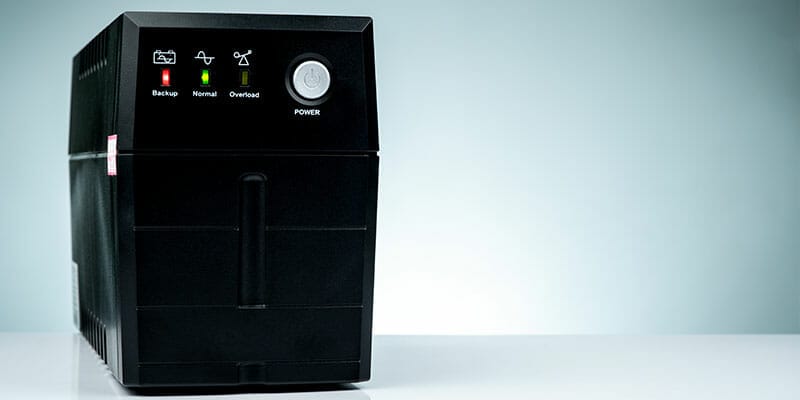
Uninterruptible Power Supply Systems (UPS Systems) perform backup and conditioning roles for the systems they are connected to. They are very important in situations where primary power supplies fail or other power supply problems, such as spikes, brownouts, electrical noise, sags, or surges. UPS systems protect small business applications used for communication, entertainment, or security from electrical surges or sags and prevent business disruption, data loss, or even injuries and fatalities.
In this article, we’ll tell you all about UPS Systems and have you choose the best UPS type suited to your business.
The UPS is a battery backup system that can perform many important functions in a set-up that depends on a primary power supply. Its main role is to act as a secondary power supply that will run long enough to shut systems down properly and back up data sufficiently when an unexpected power outage occurs. The UPS also performs an important surge-protector function to keep devices safe from the harmful effects of abnormal voltages and surges, including reduced performance or lifespan of the device. So it saves the company a world of pain when it prevents data loss and device stress or damage by preventing forced shutdown during an unforeseen power outage.
An acid or lead battery inside the UPS system provides the backup power required when its sensors detect that the main power supply has suddenly shut down. This backup power will not be available for an extended period, but it allows operators to save or back up any critical data and shut the system down gradually or function until the power supply is back on.
UPS Systems are of three main types - the line interactive system, the standby system, and the online system. Other types exist, but they are usually hybrid combinations of two or multiple main UPS system types.
Let’s discuss these system types in more detail:
1. The Line Interactive UPS System
This system serves a dual purpose as a backup power source and a power conditioner. It is the optimum system type if your devices function in an environment with rare power outages but frequent fluctuations. The system can adeptly handle several ranges of fluctuation episodes before switching on its battery power backup. This benefit of handling wide ranges of fluctuations and the circuitry for voltage boosting is a critical one. In fact, wider ranges of accepted fluctuation in the system will give you more overall protection for your devices.
2. The Standby UPS System
The Standby system earned its name from its basic function of acting as a standby when there is a sudden power outage. It performs conditioning for minor surges and usually draws power from the main AC source during normal functioning. The system is also provided with an AC/DC inverter that kicks in when sensors detect trouble in the main power source. But this system has a small transfer time drawback that users should be aware of.
3. The Online UPS System
The online UPS system, also called the double conversion system, performs by isolating the device load from the main power grid. It achieves this by following an AC/DC DC/AC double switch. The online UPS system converts the incoming supply of main power to DC and then back to AC, effectively isolating the load from the rest of the grid.
This switching function is possible because of the rectifier device in the system, which receives incoming power, converts it to DC, and feeds it into the inbuilt battery and onto the connected device through an inverter. This system nullifies the need for power transfer switches. In a power outage, the rectifier drops its connection with the main grid and uses the battery energy to power the connected device until the main power is restored.
Four main factors should determine your choice of UPS systems for your devices. These are discussed at length below:
1. Determine common power problems.
Power blackouts are the most common power problems people are aware of. But when electronic devices and critical equipment are involved, you will need to be aware of the following:
If your business is operating in an area that faces blackouts, brownouts and surges but none of the other power anomalies, a standby UPS system could work well for you. An online UPS system may be required if you face a combination of all the above power problems.
2. Select the right size.
The optimal UPS system for your business will have to be sized correctly in terms of capacity. Depending on how much equipment will need the supported power supply and the combined load or amount of power they will use, you can choose a UPS with a comparable load capacity. You can find information about capacity and load in the corresponding user manuals of your devices and the UPS system you are considering. Manufacturers or other professionals could also help you make the right connections to match device load to UPS capacity.
3. Determine optimum run time.
Runtime is the next important consideration for choosing the right UPS system. Runtime is the amount of performance time your system requires to provide alternate power when there is a power outage or other trouble in the main supply. Calculate how much time you will need to perform a safe system shutdown and data backup, and this can be used as runtime. System load or the amount of power load your system needs to back up has an effect on runtime. A larger load will mean less runtime or battery life, and vice versa.
Think in ranges when determining optimum runtime. Work from the least amount of time you will need to optimise your devices and work up from there. A broader range of runtime will give you more choice in UPS systems.
4. Choosing an appropriate form factor.
There are three main form factors or size and shape of the device housing. These are:
In short, form factor choice is usually determined by where you want to place your system.
Conclusion
UPS systems are not everyday buys. They are high-priced investments that must be carefully considered and matched to your needs. At the same time, they are necessary in most cases and are invaluable for protecting your devices and company data. If you are looking for professional, experienced UPS dealers in Chennai, our Nantech services will be just the right fit for you!
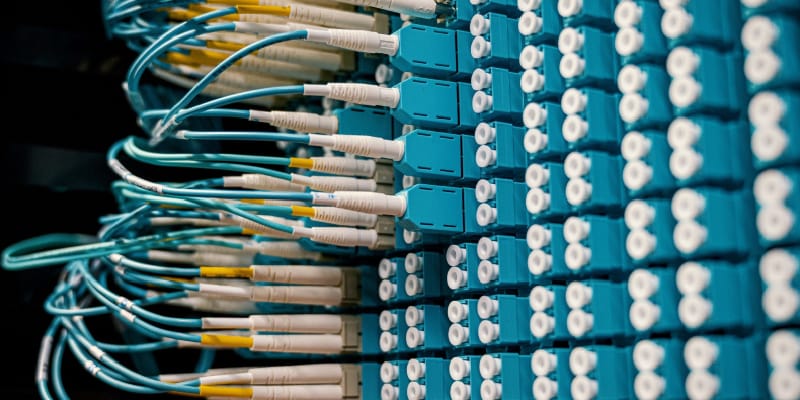
Nantech uses modern state of the art equipment, they then conduct Power Quality Audits and Power monitoring at various Engineering, Automobile, Aerospace, Pharmaceutical, IT Data centers, Textile, Printing, Defence & Railway establishments at a national level. The important factors while writing an audit of an instrument are its Voltage range, Frequency range, Transient response(response of system to change from steady state), Lag, current requirement ,Harmonics(voltage or current at multiple of frequency produced by non-linear loads) etc.
Nantech’s online UPS is a 3 phase four wire system. Its input voltage can range from 300V to 480 V and the output of this voltage will be between 380V to 400V with a ±1% range of variation. Its input frequency is 50 Hz with a ±10% variation and at the same time for the output frequency the variation regulation becomes ±0.05Hz. The voltage harmonics are less than 3% of its initial linear load and the transient response is less than 8 ( which means 10-90% of the linear load)
Nantechs line interactive UPS is a single phase system. Its input voltage range varies from 160V to 280V and output voltage is 220V or 230V with ±1% variation. Its input frequency is 50 Hz with a ±10% variation and at the same time for the output frequency the variation regulation becomes ±0.05Hz. Input lag factor is less than 0.8. Transient response is less than 8 ( which means 10-90% of the linear load) and voltage harmonics is less than 3% of the linear load.
The Servo Stabilizer has an input voltage from 170V to 270V and output voltage is Voltage range- 230V ±1%. Its input frequency range is 47-53 Hz.
READ THIS ALSO: Healthy Maintenance of Your Transformer
Active Harmonic Filter has an input voltage range of 400V,3Ph +N(+10% or -15%) and frequency range of 50Hz(60 Hz optional) with ±10% variation.
Constant Voltage Transformer has input voltage between170 to 270 V ( can be customizable) and the output voltage is 220V-1%. Its input line frequency is – 50 Hz with - 0.5% variation. Output regulation is 2% at no load to full load.
In Ultra Isolation Transformer 55 to 680 vac voltage is available with Input voltage 115v or 230v or 415v and the Output regulation is less than 2%.
Input DC (current) ranges from 10.5 to 14.2 A. Its input voltage is 12V and output voltage can be 220V to 230V.
Note- Here the ± 10% symbolises that a variation of -10% to +10% is noticed while operating that system.
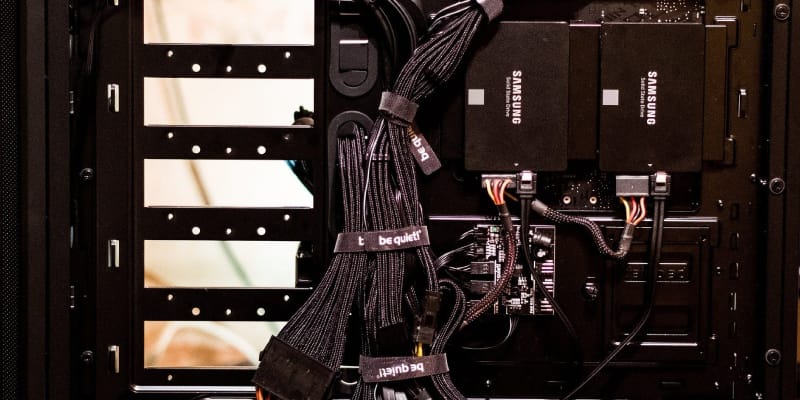
UPS- Uninterruptible Power Supply or Source. It is a backup system with incredible fast safe measures in place. In case of an emergency ( like main power failure) this appliance helps keeps machines connected to it safe and provides energy to these machines till the time its battery runs out.
In December 2016 the Emerson Network Power was renamed Vertiv by the Platinum Equity (company which acquired it).
ALSO READ THIS: VERTIV THERMAL PRODUCTS (PAC)
| SERIES | Input Voltage | Output Voltage | Battery | Application | Features |
Liebert ITON-
|
220/230 VAC | ±10% of input VAC |
|
Home or Small office’s computer and electronic equipment |
|
Liebert GXT MT+ -
|
230 VAC | ± 1% of input VAC | 12V/ 9 AH | For Critical Application like banks, Data Networks, Small Data Centers, VOIP Applications |
|
Liebert GXT MT+ 6 kVA - 20 kVA
|
|
± 1% of input VAC |
|
Same as above |
|
| Liebert POWERBANK 6 kVA | 230 VAC | ±2% AC INPUT | 192 VDC | Electrical Grid power cut or fluctuation issues like in middle of a surgery. |
|
Liebert NXC
|
305-477 VAC | ±20% of input VAC |
|
Wide range of applications from IT and manufacturing to retail and transport |
|
Liebert eXM 80kW - 200kW
|
380/400/415 VAC | 380/400/415 VAC | Light industrial application | Online mode Eff-iciency 96% to 99%
|
|
| Liebert APM 400- 600 kVA |
380/400/415 VAC | 380/400/415 VAC | Management of servers in IT |
Flex Power Tech is basically intelligence that helps the flexibility and adaptability. |
|
Liebert APM
|
380/400/415 VAC | 380/400/415 VAC | Same as above | Same as above | |
Liebert AF3
|
|
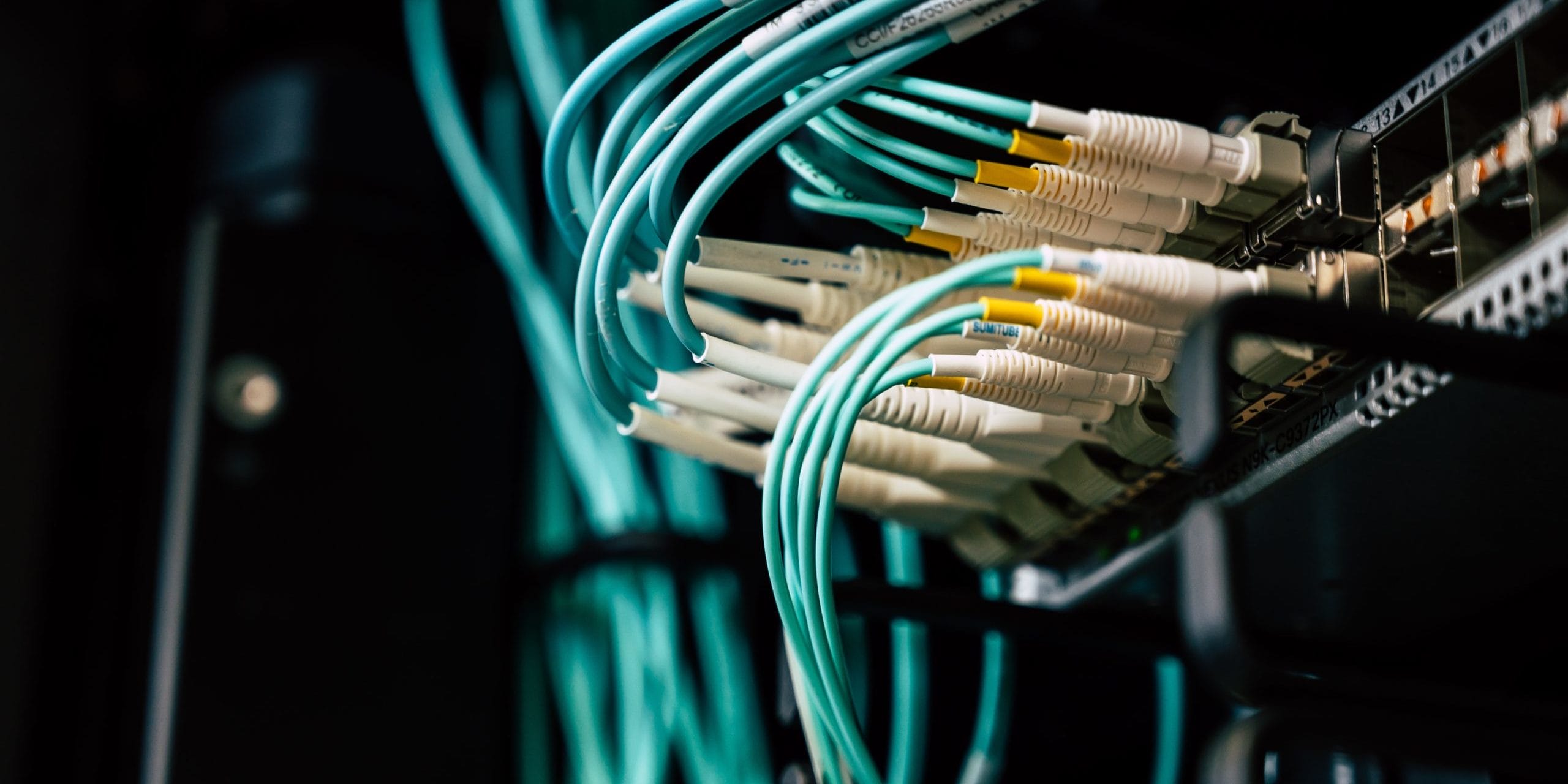
Electrical systems form a crucial part of every organization that runs on electrical devices. If there is even a little problem in the system, it shuts down, and the movement of work in the organization comes to a standstill. This is where power quality audits come into the picture. They act like bulletproof jackets for the electrical system. It checks the safety and efficiency of an organization's electrical system.
It works in the following ways :
Importance of PQA :
Consequences of bad power quality can inflict serious losses to your company in case there is a disruption in the flow of a sinusoidal wave of power supply, which could cause significant damage to your electrical system, in turn affecting the supply to your devices. By this, not only are your devices getting damaged, but there is also a breach in the working momentum among your employees. This will further reflect the progress of your firm. A power quality audit can enable you to maintain good power quality and, in this way, discourage any hindrance that comes in the way of your company's prosperity.
To summarise, one can say that a power quality audit determines how fit your electrical system is. Moreover, it acts as a warning system and helps stave off any electrical issues, thereby protecting your power system and the appliances connected to it. Nantech Power Systems Pvt Ltd is one such company based in Chennai that provides you with top-notch Power quality audits.